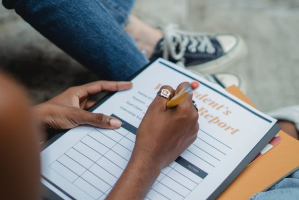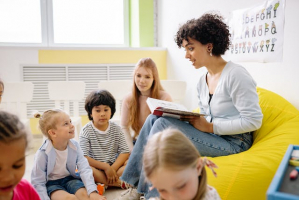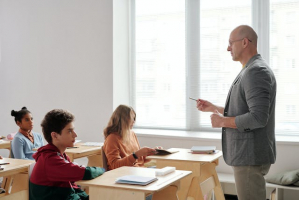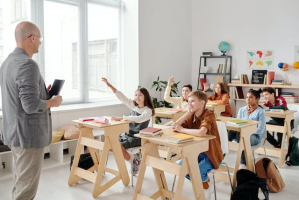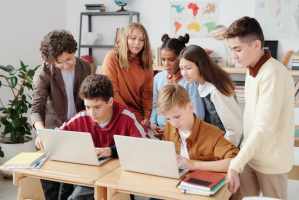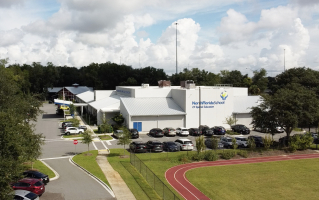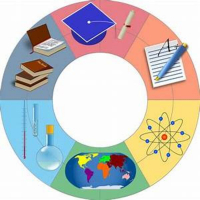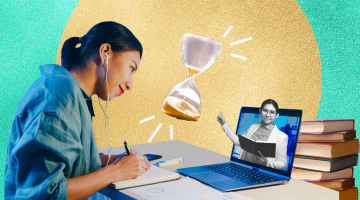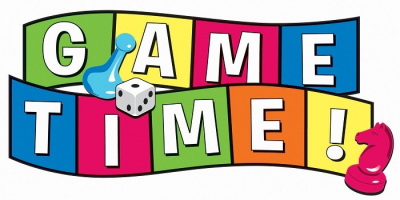Top 10 Common Questions When Applying for Special Education Teacher Jobs and Answers
Unlock the secrets to a successful application for special education teacher jobs with Toplist guide to the top 10 common questions and answers. Gain valuable ... read more...insights into the hiring process, enhance your preparation and increase your chances of landing the ideal position in the field of special education. Explore key tips for a standout application today.
-
Short answer:
I have ten years of experience working as a special education teacher, during which I have developed and implemented individualized education plans (IEPs) for students with diverse needs. I've also collaborated with colleagues, parents, and support staff to create a supportive learning environment.
Detailed answer:
With over a decade of experience as a special education teacher, I've honed my skills in crafting and implementing individualized education plans (IEPs) for students with diverse needs. This entails conducting thorough assessments and collaborating with colleagues and specialists to create comprehensive plans that address academic, emotional, and behavioral aspects.
Collaboration is central to my teaching approach. I actively engage with colleagues, parents, and support staff to ensure a cohesive and supportive learning environment. Regular communication and team meetings foster unity, while collaboration with parents provides valuable insights into students' home experiences, contributing to a holistic support system.
Recognizing the importance of support staff, I work closely with professionals like speech therapists and occupational therapists, appreciating the diverse expertise they bring. This collaborative effort ensures a well-rounded support system for students, encompassing both academic and life skill development.
Beyond academics, I prioritize creating a positive and nurturing classroom atmosphere. Employing various teaching strategies, including differentiated instruction and assistive technologies, I cater to diverse learning styles, fostering an environment where each student feels valued and encouraged.
In summary, my extensive experience as a special education teacher underscores my commitment to personalized education, collaboration with stakeholders, and the creation of a supportive learning environment. As I continue in my role, advocating for each student's unique needs remains at the forefront, ensuring an inclusive space where all learners can thrive.
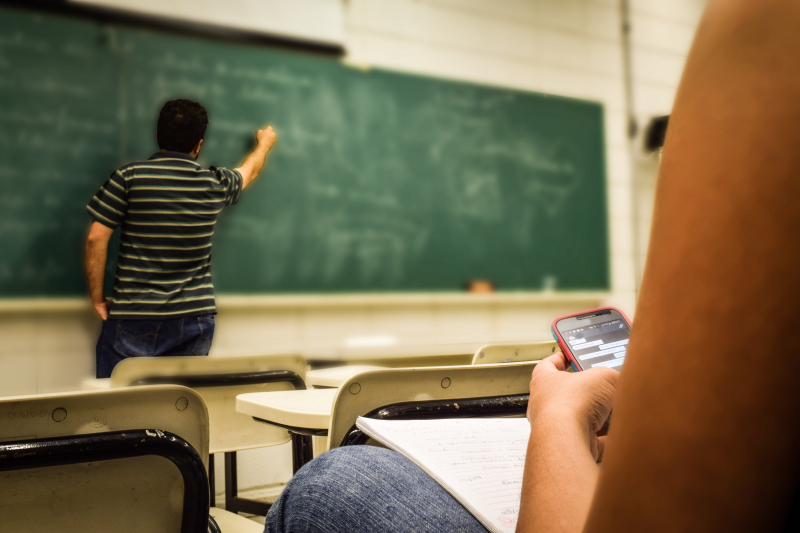
Photo by Pixabay via pexels.com 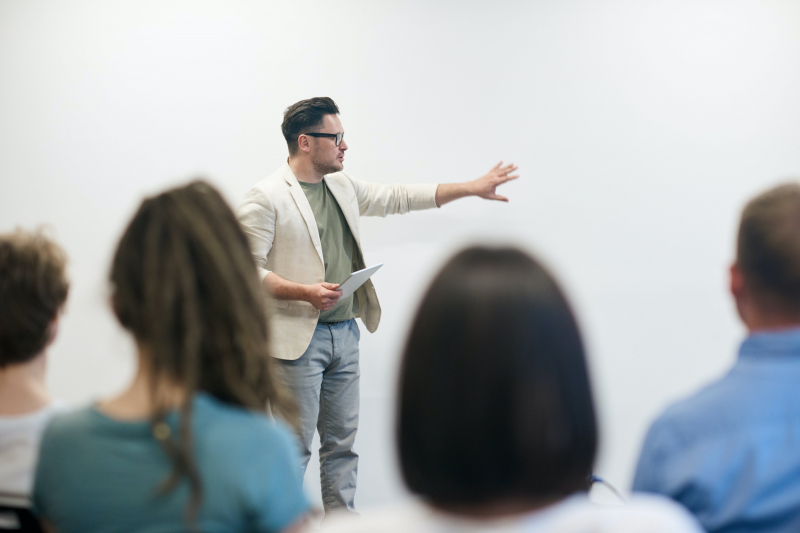
Photo by fauxels via pexels.com -
Short answer:
I differentiate instruction by assessing each student's strengths and challenges, adapting materials, and incorporating various teaching strategies. This ensures that I meet the individual needs of each student and create an inclusive learning environment.
Detailed answer:
In my commitment to fostering an inclusive learning environment, I employ a range of strategies to differentiate instruction, tailoring my approach to the unique strengths and challenges of each student. The process begins with a thorough assessment, where I meticulously evaluate each student's abilities, learning styles, and areas requiring additional support. This individualized approach enables me to gain insights into their academic strengths, as well as any challenges they may face.
Adapting materials is a crucial aspect of my instructional design. I recognize the importance of utilizing diverse resources that cater to various learning modalities. By incorporating multimedia, visual aids, and interactive tools, I aim to provide a rich and engaging educational experience for every student. This not only ensures accessibility but also enhances comprehension and retention.
Furthermore, I actively explore and implement a variety of teaching strategies to accommodate different learning preferences. Whether employing project-based learning, cooperative group activities, or technology-driven approaches, my goal is to create a flexible and dynamic instructional framework. This adaptability is especially beneficial in a diverse classroom where students may respond differently to various methods.
A key component of my instructional approach is fostering a sense of autonomy among students. By encouraging self-directed learning and offering choices within structured parameters, I empower students to take ownership of their educational journey. This not only enhances their motivation but also cultivates a positive and supportive classroom culture.
Moreover, I prioritize ongoing assessment and feedback mechanisms to gauge the effectiveness of my instructional methods. Regularly reviewing student progress allows for timely adjustments and ensures that the learning experience remains tailored to evolving needs. This iterative process reflects my commitment to continuous improvement and responsiveness to the dynamic nature of education.
In conclusion, my commitment to differentiating instruction encompasses a comprehensive approach that spans assessment, material adaptation, and the integration of diverse teaching strategies. By recognizing and accommodating the unique qualities of each student, I aim to create an inclusive and empowering learning environment that promotes academic success and fosters a lifelong love of learning.
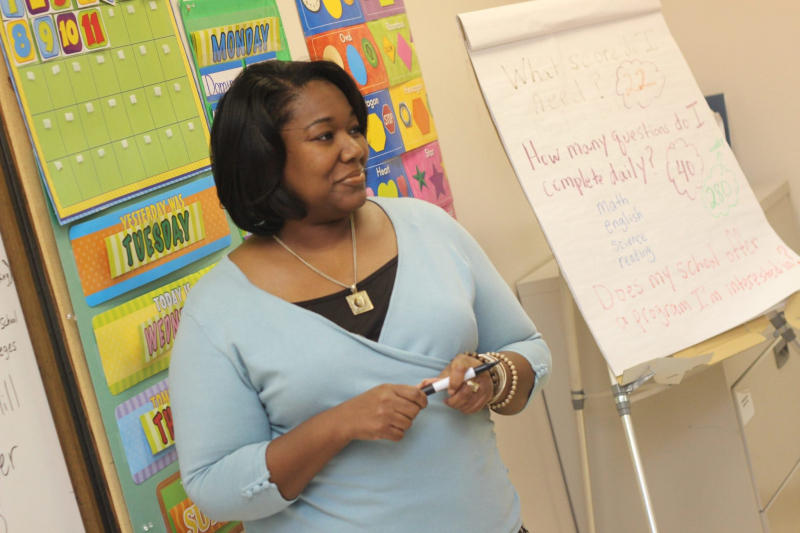
Photo by nappy via pexels.com 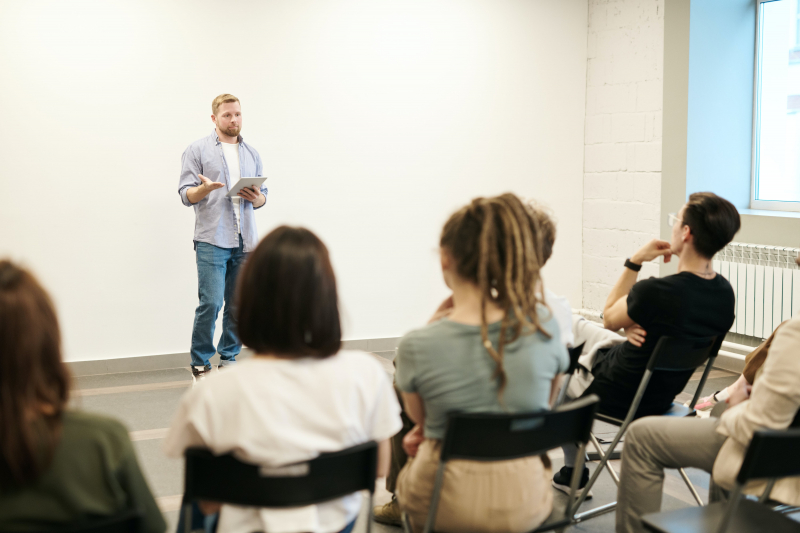
Photo by fauxels via pexels.com -
Short answer:
In a previous role, I had a student with challenging behavior. I implemented a behavior intervention plan, collaborated with support staff, and communicated closely with parents to develop a consistent approach. This resulted in a positive change in the student's behavior.
Detailed answer:
In a previous role, I encountered a significant challenge when working with a student exhibiting challenging behavior. Recognizing the importance of addressing this issue proactively, I took decisive steps to implement a comprehensive behavior intervention plan. This involved a thorough analysis of the factors contributing to the challenging behavior, collaborating with support staff, and devising targeted strategies to foster positive change.
One crucial aspect of the intervention was open and continuous communication with the student's parents. I engaged in regular discussions to gain insights into the student's behavior outside of the school environment. This collaborative effort aimed to ensure a consistent and unified approach to addressing the challenges faced by the student, both at home and in the school setting. By establishing a strong partnership with parents, we could implement a holistic support system that extended beyond the classroom walls.
Collaboration with support staff was another key element of the intervention plan. Working closely with colleagues such as behavioral specialists and counselors, we pooled our expertise to create a tailored approach that addressed the student's unique needs. Regular team meetings facilitated the exchange of ideas, allowing us to refine and adjust our strategies based on ongoing observations and assessments.
Through the collective efforts of the intervention plan, there was a notable positive change in the student's behavior. Consistency and collaboration proved to be powerful tools in creating an environment conducive to the student's growth and development. The student began to exhibit more adaptive behaviors, and the overall learning experience for both the student and peers improved significantly.
This experience reinforced my belief in the transformative impact of proactive intervention and collaborative approaches in special education. It highlighted the importance of personalized strategies tailored to individual needs, the value of open communication with parents, and the efficacy of teamwork among support staff. As I continue in my career, this experience serves as a testament to the positive outcomes that can be achieved through a dedicated and collaborative approach to addressing challenging behaviors in the realm of special education.

Photo by Keira Burton via pexels.com 
Photo by Keira Burton via pexels.com -
Short answer:
Collaboration is crucial. I regularly attend team meetings, share insights from IEPs, and work closely with general education teachers to ensure a unified approach. Open communication helps me address the needs of my students effectively.
Detailed answer:
Collaboration stands as a cornerstone in my approach to education. Recognizing its pivotal role in fostering a supportive and cohesive learning environment, I actively engage in various collaborative endeavors. Regular attendance at team meetings serves as a platform to exchange ideas, discuss student progress, and align strategies. During these sessions, I share valuable insights gleaned from individualized education plans (IEPs), drawing on comprehensive assessments of each student's strengths and challenges.
One significant aspect of my collaborative efforts involves working closely with general education teachers. This collaboration is essential to ensure a unified approach to student learning that seamlessly integrates both the general and special education perspectives. By sharing information on specific accommodations, modifications, and instructional strategies outlined in IEPs, I contribute to a collective understanding of each student's unique requirements. This collaborative synergy allows for a more holistic and inclusive educational experience.
Open communication is a linchpin in my collaborative efforts. Establishing transparent channels of communication with colleagues, support staff, and administrators enables me to address the diverse needs of my students effectively. Whether through regular email updates, informal conversations, or more formalized communication channels, I prioritize keeping all stakeholders well-informed about the progress, challenges, and successes within the learning environment. This transparency not only facilitates a shared understanding of student needs but also fosters a sense of collective responsibility for their academic and personal development.
Moreover, collaboration extends beyond the confines of the school walls to involve parents actively in the educational journey. I recognize the significance of forging strong partnerships with parents to create a seamless connection between the home and school environments. Regular parent-teacher conferences, progress reports, and open-door policies contribute to a culture of collaboration where parents feel valued and informed partners in their child's education.
In conclusion, my commitment to collaboration encompasses active participation in team meetings, sharing insights from IEPs, and working closely with general education teachers. Open communication serves as a linchpin, fostering a unified approach to student learning. As I continue to prioritize collaboration in my educational endeavors, I am dedicated to creating an inclusive and supportive learning community where every student can thrive.

Photo by Ketut Subiyanto via pexels.com 
Photo by Ketut Subiyanto via pexels.com -
Short answer:
I believe in fostering a strong partnership with parents. I regularly communicate progress, involve them in the development of IEPs, and provide resources and strategies for continued support at home. Parental involvement is key to a student's success.
Detailed answer:
Fostering a robust partnership with parents is at the core of my educational philosophy. I recognize the indispensable role parents play in their child's academic journey, and I actively seek to establish open, transparent, and collaborative channels of communication. Regular updates on student progress are a fundamental aspect of this partnership. Through emails, newsletters, and scheduled parent-teacher conferences, I ensure that parents are well-informed about their child's achievements, challenges, and overall development. This ongoing dialogue creates a shared understanding of the student's academic trajectory and reinforces the collaborative nature of our educational community.
In addition to keeping parents informed, I actively involve them in the development of Individualized Education Plans (IEPs). Recognizing that parents possess unique insights into their child's strengths, preferences, and potential challenges, I value their input as an integral part of the planning process. Collaborative IEP meetings provide a platform for meaningful discussions, allowing us to collectively tailor strategies and goals that align with the student's individual needs. This inclusive approach not only empowers parents but also strengthens the sense of shared responsibility for the student's success.
Furthermore, I believe in equipping parents with resources and strategies to extend support beyond the classroom. Providing informative materials, workshops, and guidance on how to reinforce learning at home fosters a seamless connection between school and home environments. Whether it involves suggesting reading materials, educational games, or specific activities tailored to the student's needs, I aim to empower parents to actively engage in their child's education.
I firmly hold that parental involvement is a key determinant of a student's success. Research consistently demonstrates the positive impact of active parental engagement on academic achievement and overall well-being. By fostering a strong partnership with parents, we create a collaborative support system that nurtures not only academic growth but also the social and emotional development of the student.
In conclusion, my commitment to building a strong partnership with parents extends beyond mere communication; it involves active involvement in the development of IEPs and providing resources for continued support at home. This collaborative approach reinforces the belief that a student's success is best achieved through a harmonious integration of efforts between educators and parents, creating a supportive ecosystem that propels the student towards holistic development and academic excellence.
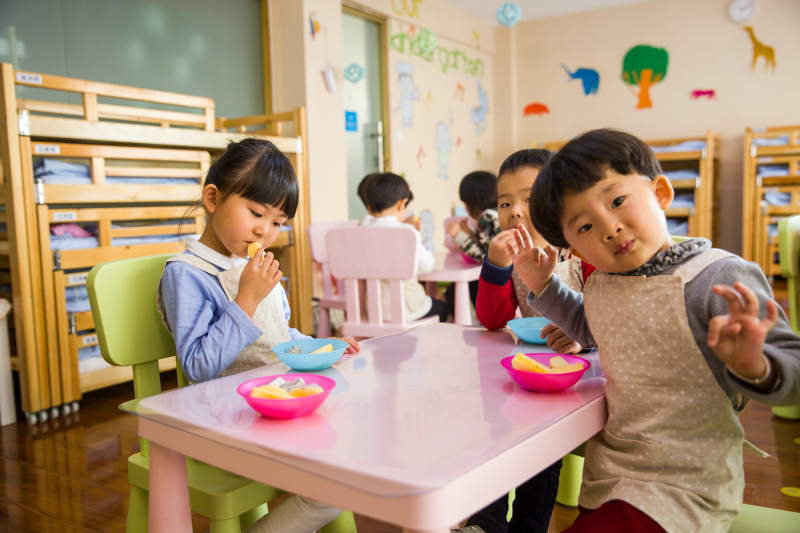
Photo by Naomi Shi via pexels.com 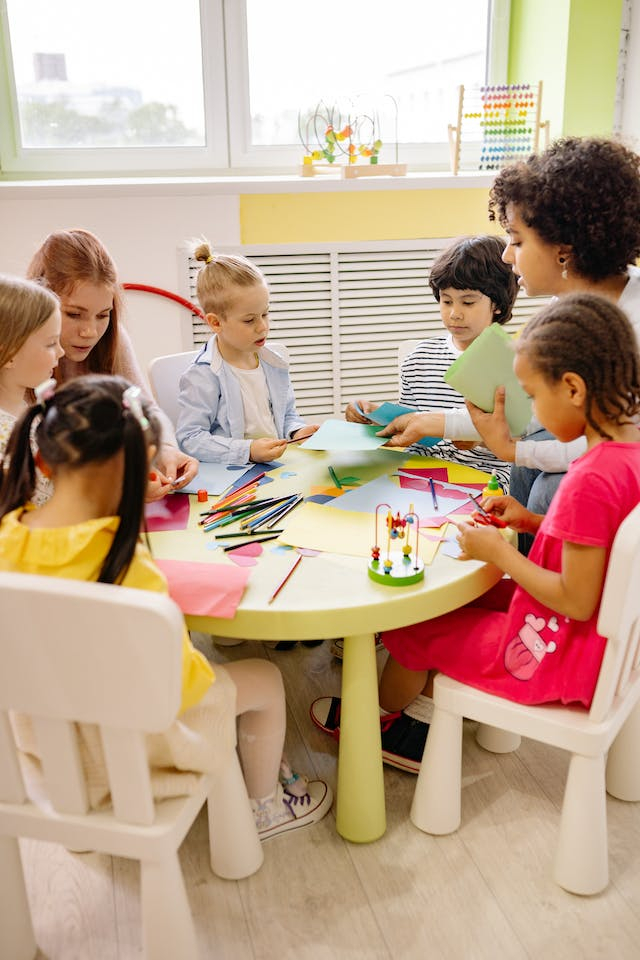
Photo by Yan Krukau via pexels.com -
Short answer:
I am committed to professional development and regularly attend workshops, conferences, and webinars. I also subscribe to professional journals and participate in online forums to stay informed about the latest research and best practices in special education.
Detailed answer:
My unwavering commitment to professional development is a cornerstone of my dedication to delivering high-quality education in the field of special education. Recognizing the dynamic nature of the education landscape, I actively seek opportunities to enhance my knowledge, refine my skills, and stay abreast of the latest developments in the field. Attending workshops, conferences, and webinars is a routine aspect of my professional growth strategy. These events provide immersive learning experiences, offering insights into innovative teaching methods, emerging technologies, and evidence-based practices that can be directly applied in the special education setting.
Furthermore, I subscribe to reputable professional journals that serve as invaluable resources for staying informed about cutting-edge research and best practices. Regularly immersing myself in scholarly articles allows me to deepen my understanding of the theoretical underpinnings of special education, providing a solid foundation for evidence-based decision-making in the classroom. These journals serve as a bridge between research and practice, informing my instructional strategies and interventions to better meet the diverse needs of my students.
Participating in online forums dedicated to special education is another avenue through which I cultivate my professional development. Engaging in discussions with peers, exchanging ideas, and seeking advice from seasoned professionals contribute to my ongoing growth. These forums serve as virtual communities where educators from diverse backgrounds share their experiences, challenges, and success stories, fostering a collaborative environment that transcends geographical boundaries.
Moreover, my commitment to professional development extends beyond the traditional realms of workshops and conferences. I actively seek out opportunities to engage with emerging educational technologies, exploring their potential to enhance the learning experiences of students with diverse needs. Whether through online courses, virtual simulations, or interactive platforms, I embrace innovative tools that align with the principles of inclusive education.
In conclusion, my commitment to professional development is a multifaceted endeavor encompassing workshops, conferences, webinars, journal subscriptions, and active participation in online forums. This proactive approach ensures that my instructional practices remain informed by the latest research and best practices in special education. As I continue to evolve in my role, I am dedicated to ongoing learning, embracing new ideas, and refining my skills to provide the highest standard of education for students with diverse learning needs.
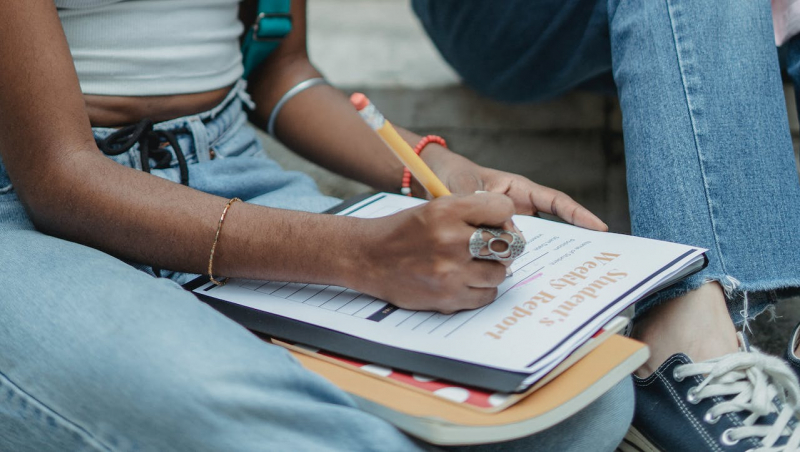
Photo by Zen Chung via pexels.com 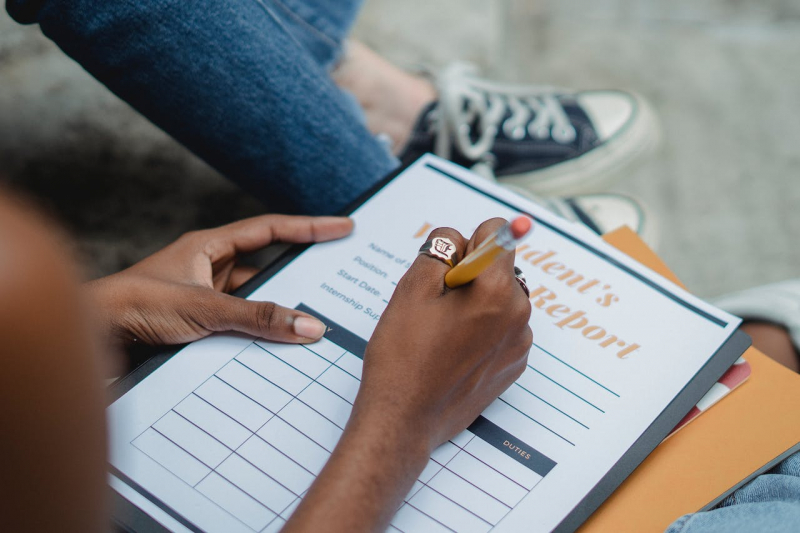
Photo by Zen Chung via pexels.com -
Short answer:
Certainly. I once modified a reading lesson to accommodate a student with dyslexia. By incorporating multisensory activities and providing additional support, the student not only improved in reading but also gained confidence in the learning process.
Detailed answer:
Certainly. One transformative experience that underscores my commitment to adapting instruction involves the modification of a reading lesson to meet the unique needs of a student with dyslexia. Recognizing the challenges this student faced in traditional reading approaches, I embraced a proactive approach to tailor the lesson to accommodate their learning style. This endeavor involved a comprehensive analysis of the specific difficulties associated with dyslexia, such as difficulties with phonological processing and word recognition.
To address these challenges, I incorporated multisensory activities into the reading lesson. This multisensory approach engaged the student through auditory, visual, and kinesthetic modalities, creating a more holistic learning experience. Utilizing methods such as interactive games, tactile materials, and verbal reinforcement, I aimed to reinforce key concepts in a manner that aligned with the student's cognitive strengths. This not only made the learning process more enjoyable but also enhanced retention and comprehension.
Additionally, recognizing the importance of providing additional support, I implemented a differentiated instruction strategy. This involved one-on-one sessions to focus on specific areas of difficulty, allowing for targeted interventions. Through personalized guidance, the student received individualized feedback and reinforcement, fostering a sense of achievement and progress. Moreover, I collaborated closely with the school's support staff, including speech therapists and literacy specialists, to ensure a cohesive and comprehensive support system.
The results of this modified reading lesson were truly impactful. The student not only demonstrated notable improvement in reading skills but also experienced a boost in confidence. Witnessing this transformation affirmed the efficacy of personalized, adaptable instruction in addressing the diverse needs of students. Beyond the academic progress, the student exhibited a newfound enthusiasm for learning, highlighting the profound impact that tailored approaches can have on a student's overall well-being.
This experience reinforced my belief in the power of individualized instruction and the significance of adapting teaching methodologies to accommodate diverse learning needs. As I continue in my role, I remain committed to proactively identifying and addressing the unique challenges each student may face, ensuring that the learning environment is inclusive, supportive, and conducive to the success of every learner.
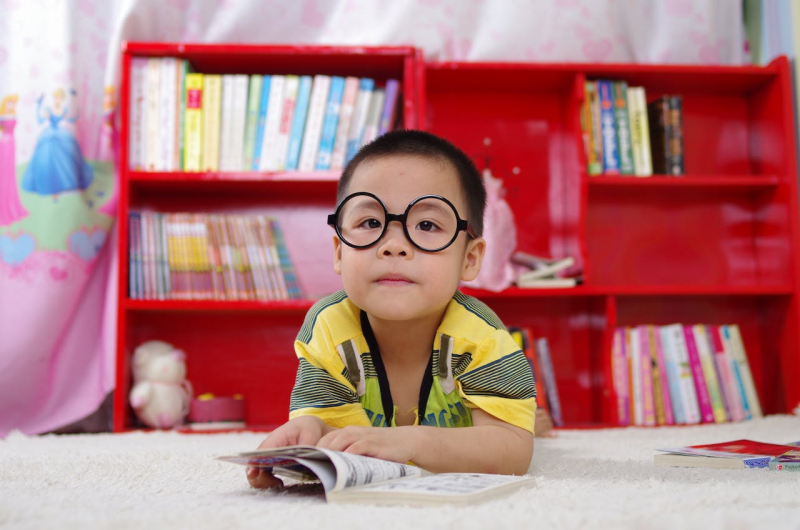
Photo by Pixabay via pexels.com 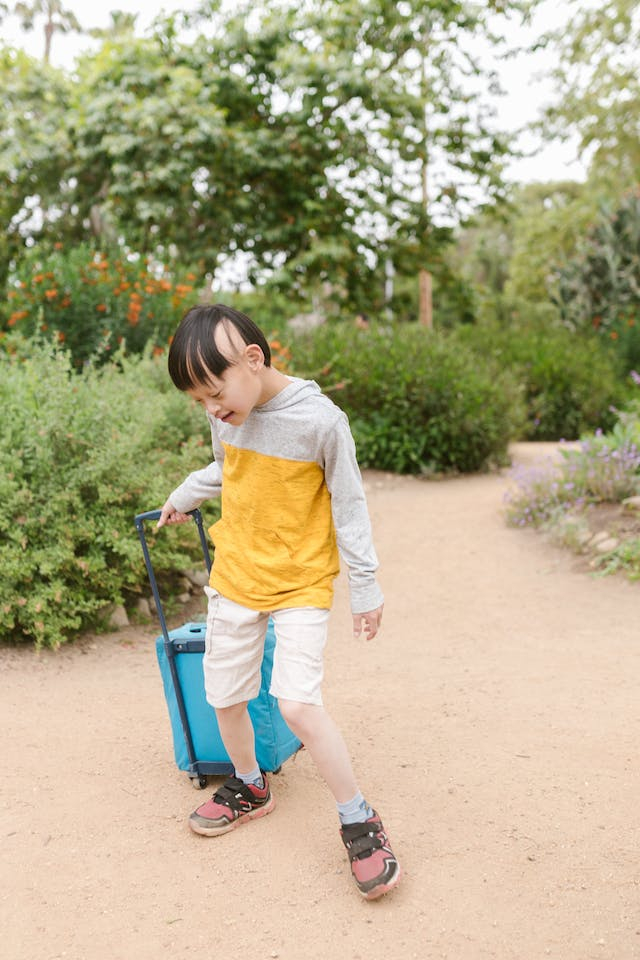
Photo by RDNE Stock project via pexels.com -
Short answer:
Organization is key in managing paperwork. I use a systematic approach to ensure timely completion of IEPs and progress reports. This includes setting clear timelines, collaborating with support staff, and leveraging technology to streamline the process.
Detailed answer:
Organization is not only a fundamental aspect of effective teaching but also a linchpin in managing the myriad paperwork associated with special education. Recognizing the importance of streamlined processes, I have developed and implemented a systematic approach to ensure the timely completion of Individualized Education Programs (IEPs) and progress reports. This meticulous approach encompasses a series of strategies aimed at fostering efficiency, clarity, and collaboration among the various stakeholders involved.
Setting clear timelines is a cornerstone of my organizational methodology. At the commencement of each academic term, I establish a comprehensive schedule that delineates key milestones in the IEP and progress report completion process. This includes deadlines for initial assessments, parent-teacher conferences, and collaborative meetings with support staff. These timelines serve as a roadmap, providing a structured framework that not only ensures the timely completion of essential documents but also facilitates proactive planning and communication.
Collaboration with support staff is another integral component of my organizational strategy. Recognizing the collaborative nature of special education, I engage in regular communication with speech therapists, occupational therapists, and other specialists involved in a student's support network. This collaborative effort allows for the seamless exchange of information, ensuring that each team member is well-informed about the student's progress and any adjustments required in the support plan. By fostering a culture of teamwork, we collectively contribute to the overall success of the student.
Leveraging technology is a dynamic element of my organizational approach. In an era where digital tools can significantly enhance efficiency, I integrate technology to streamline paperwork processes. Utilizing specialized software for IEP documentation and progress tracking not only reduces the administrative burden but also enhances accuracy and accessibility. Digital platforms enable real-time collaboration, facilitating communication with parents and support staff while maintaining the integrity and confidentiality of student records.
Furthermore, I prioritize ongoing professional development to stay abreast of emerging technologies and best practices in organizational management. This proactive approach ensures that I am well-equipped to leverage the latest tools and methodologies, continually refining my organizational strategies to meet the evolving demands of the educational landscape.
In conclusion, my organizational approach to managing paperwork in special education is characterized by clear timelines, collaboration with support staff, and the strategic use of technology. This multifaceted strategy not only ensures the timely completion of essential documents but also fosters a collaborative and efficient environment that prioritizes the well-being and success of each student. As I continue in my role, I remain dedicated to refining and adapting these organizational strategies to uphold the highest standards of administrative efficiency and educational excellence.
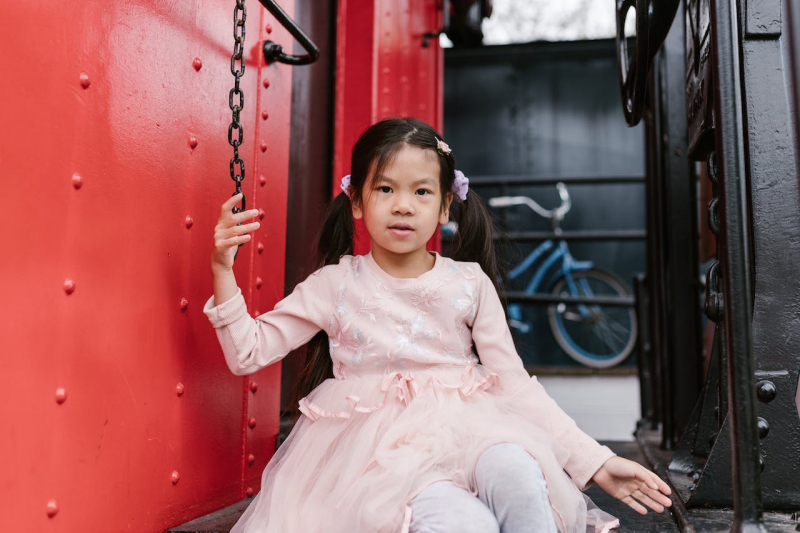
Photo by RDNE Stock project via pexels.com 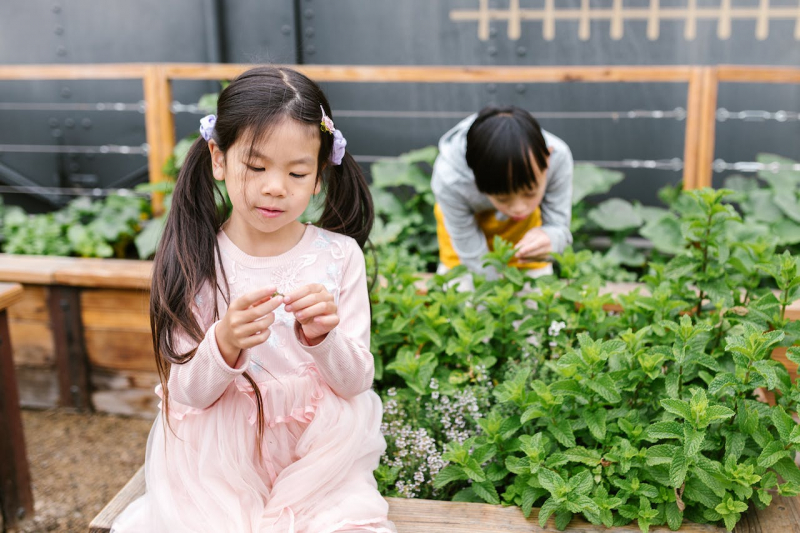
Photo by RDNE Stock project via pexels.com -
Short answer:
Empathy, patience, and adaptability are crucial qualities. Understanding each student's unique needs, being patient in addressing challenges, and adapting instructional strategies to meet diverse learning styles contribute to a successful learning environment.
Detailed answer:
Empathy, patience, and adaptability are not merely qualities; they form the very foundation of my teaching philosophy and are indispensable in creating a successful and inclusive learning environment. The recognition of the individuality of each student is at the core of empathy. By cultivating a deep understanding of their unique needs, strengths, and challenges, I establish a connection that goes beyond the academic realm. This empathetic approach allows me to tailor my interactions, instructional methods, and support mechanisms to address the holistic needs of each learner.
Patience is a virtue that I hold dear, especially when confronted with challenges that students may encounter. Whether it be a learning difficulty, a behavioral obstacle, or a personal struggle, exercising patience is key to providing the necessary support. Patience allows me to create an environment where students feel safe to express themselves, make mistakes, and embark on a journey of growth. It is through patient guidance that I can help students navigate obstacles, fostering resilience and self-confidence.
Adaptability is an essential quality that underscores my commitment to catering to diverse learning styles. Every student brings a unique set of strengths and preferences to the classroom. Adapting instructional strategies to accommodate various learning modalities ensures that each student has the opportunity to grasp and internalize concepts effectively. This adaptability extends to the integration of technology, the incorporation of diverse teaching methods, and the creation of flexible learning environments that resonate with the dynamic nature of education.
Creating a successful learning environment requires a delicate balance of these qualities. It involves acknowledging and valuing the individuality of each student, maintaining a patient and supportive stance in the face of challenges, and remaining adaptable to the evolving needs of the diverse learners in my care. This holistic approach extends beyond academic achievements, aiming to foster an environment where students feel seen, heard, and empowered to reach their full potential.
Moreover, I believe that these qualities are not only crucial for student success but also set the tone for a positive and collaborative classroom culture. Empathy, patience, and adaptability create a foundation for respectful and understanding relationships not only between teacher and student but also among the students themselves. This collaborative spirit enhances the overall learning experience, promoting a sense of community where everyone feels valued and encouraged to contribute.
In conclusion, empathy, patience and adaptability are not just qualities I possess; they are integral to my teaching philosophy. These qualities shape the way I understand and respond to the diverse needs of each student, enabling me to create a learning environment that fosters growth, resilience, and a sense of community. As I continue to evolve in my role, these qualities remain at the forefront of my commitment to providing an inclusive and empowering education for all students.
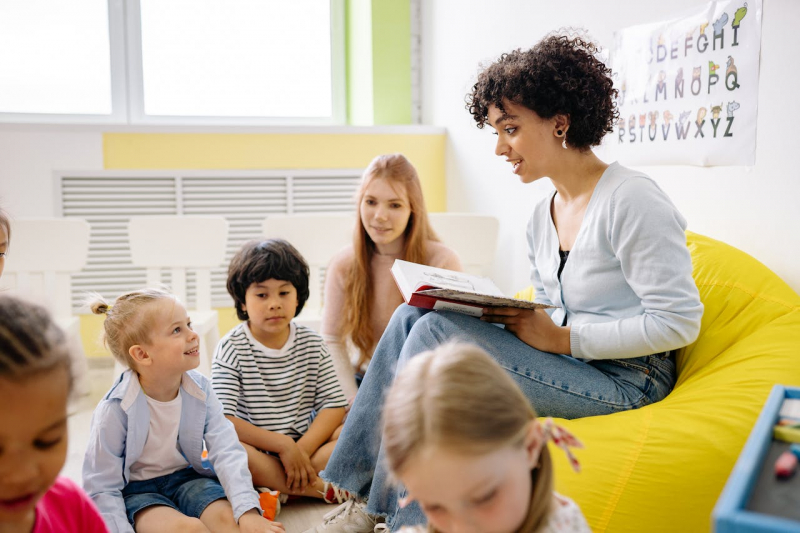
Photo by Yan Krukau via pexels.com 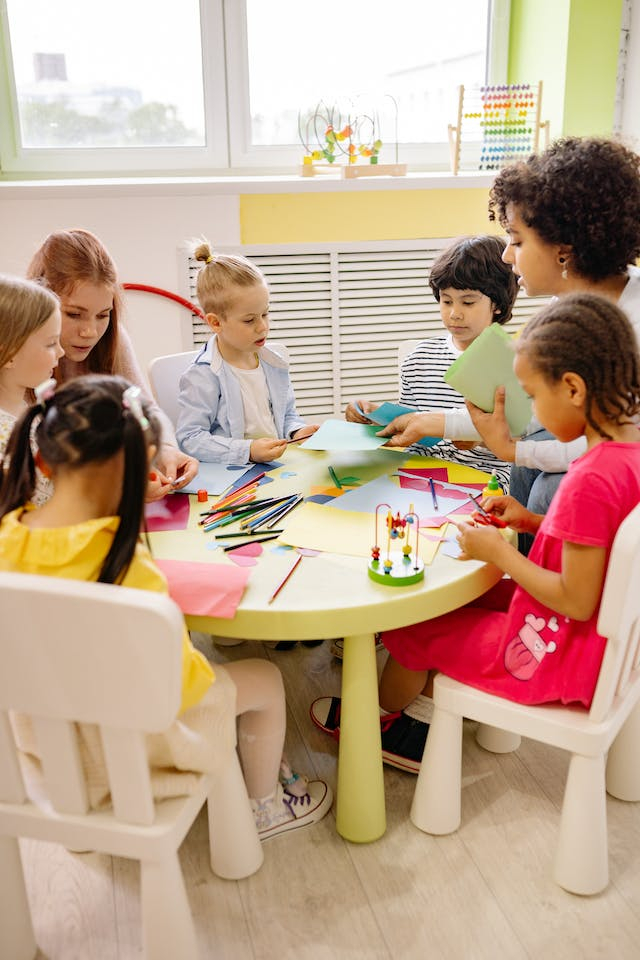
Photo by Yan Krukau via pexels.com -
Short answer:
I prioritize the social and emotional well-being of my students. This involves implementing social skills programs, creating a positive and inclusive classroom culture, and providing individualized support to help students develop essential life skills.
Detailed answer:
Prioritizing the social and emotional well-being of my students is not just a professional duty but a profound commitment that shapes the core of my teaching philosophy. Recognizing the pivotal role that social and emotional development plays in a student's overall success, I go beyond traditional academic measures to create an environment that nurtures their holistic growth.
One cornerstone of my approach involves the implementation of targeted social skills programs. These programs are designed to equip students with the tools they need to navigate interpersonal relationships, communicate effectively, and develop empathy. Incorporating structured activities, role-playing exercises, and group discussions, I create opportunities for students to practice and refine their social skills in a supportive and controlled environment. By fostering these skills, I aim to empower students with the interpersonal competence necessary for success both inside and outside the classroom.
Creating a positive and inclusive classroom culture is another fundamental aspect of my commitment to the social and emotional well-being of my students. I strive to cultivate an atmosphere where diversity is celebrated, kindness is paramount, and every student feels a sense of belonging. Through collaborative projects, peer mentoring initiatives, and inclusive classroom practices, I aim to foster a community spirit that promotes positive relationships among students. This not only contributes to a supportive learning environment but also enhances students' emotional resilience and well-being.
Individualized support is a key component of addressing the diverse social and emotional needs of my students. I recognize that each student brings a unique set of experiences, challenges, and strengths to the classroom. By providing personalized guidance and support, I aim to help them develop essential life skills such as self-regulation, problem-solving, and effective communication. This individualized approach involves ongoing assessments, targeted interventions, and regular check-ins to ensure that each student's social and emotional development is progressing in alignment with their unique profile.
Additionally, I actively collaborate with parents and support staff to create a comprehensive support network for students. Regular communication with parents ensures a cohesive approach to addressing social and emotional needs both at home and in the classroom. Collaborating with support staff, including counselors and psychologists, allows for a multidisciplinary approach that taps into a range of expertise to meet the diverse needs of students.
In conclusion, my commitment to prioritizing the social and emotional well-being of my students goes beyond a mere educational imperative; it is a holistic dedication to nurturing the whole child. Through social skills programs, a positive classroom culture, and individualized support, I strive to create an environment where students not only excel academically but also develop the emotional intelligence and resilience necessary for success in all facets of life. As I continue to evolve in my role, this commitment remains unwavering, guiding my efforts to provide a comprehensive and empowering educational experience for each and every student in my care.

Photo by Katerina Holmes via pexels.com 
Photo by Julia M Cameron via pexels.com












